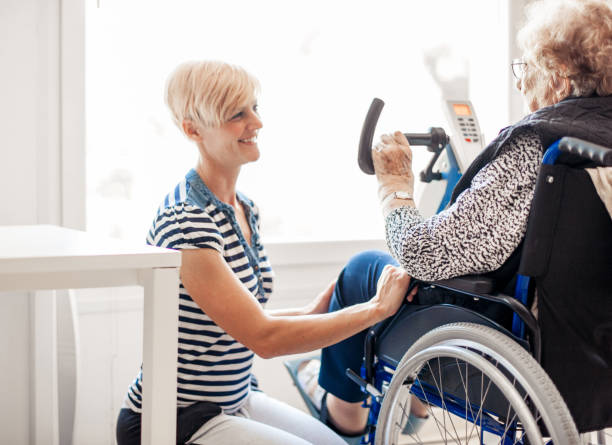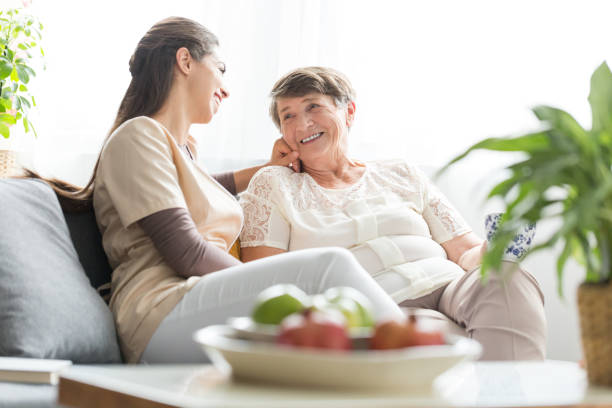Introduction

Living with Parkinson's Disease can present numerous challenges, affecting one's ability to perform daily tasks independently. From tremors and rigidity to difficulty with balance and coordination, the symptoms of Parkinson's can significantly impact a person's mobility and agility. Adaptive Clothing can greatly enhance the quality of life for individuals with Parkinson's Disease by providing a practical and innovative solution to their unique challenges.
By addressing specific functional needs and providing increased comfort and ease of movement, adaptive Clothing offers practical benefits and a renewed sense of independence and confidence. The advantages of using adaptive Clothing for people with Parkinson's Disease will be explored in this blog post. We will examine how it can improve mobility, encourage self-care, and improve overall well-being.
What is Parkinson's Disease?
Parkinson's Disease is a neurodegenerative disorder that primarily affects the motor system. This message describes a condition known as the slow reduction of dopaminergic cells in the substantia nigra area of the brain. Dopamine is a neurotransmitter that transmits signals that coordinate movement and regulate mood. As dopamine levels decrease, individuals with Parkinson's Disease experience many symptoms, including tremors, rigidity, bradykinesia (slowness of movement), and postural instability.
Apart from motor symptoms, Parkinson's Disease can also lead to non-motor symptoms such as depression, anxiety, sleep disturbances, and cognitive impairment. The exact cause of Parkinson's Disease is not yet fully understood, but genetic and environmental factors are believed to play a role. Although Parkinson's Disease cannot be cured, some treatments can help manage its symptoms. Medications, physical therapy, and lifestyle modifications can help improve motor function and enhance the quality of life for individuals living with this condition. Ongoing research aims to develop more effective treatments and ultimately find a cure for Parkinson's Disease.
Role of Clothing in Parkinson's Disease Management

Clothing plays an important role in managing the symptoms of Parkinson's Disease. People with PD often experience motor and sensory impairments, making dressing difficult or uncomfortable. Therefore, finding clothing options that provide comfort and ease of use is essential for daily living. Adaptive clothing solves this problem by offering specialized designs specifically tailored to the needs of people with Parkinson's.
Adaptive clothing is designed to be easy to put on and take off and comfortable while in use. For many PD patients, this can help reduce the stress of getting dressed, a commonly anxiety-inducing task. Furthermore, adaptive clothing often includes features such as non-restrictive collars, wide sleeves, and adjustable hems to allow for a perfect fit. This ensures that the Clothing is secure without feeling too tight or restrictive.
Adaptive clothing can also help reduce potential skin irritation caused by traditional clothing, which often contains irritating fabrics such as wool. Instead, adaptive clothing usually consists of breathable materials such as cotton, bamboo, performance polyester and jersey. This helps reduce potential discomfort while providing greater flexibility and movement for those with mobility issues.
Finally, adaptive clothing can also provide a sense of independence for PD patients who may struggle to dress due to their symptoms. Adaptive clothing features easier-to-manipulate fastenings, such as magnetic closures, which require less dexterity and strength. This can help people with PD remain independent when dressing themselves, helping to give them a sense of control over their daily routine.
Overall, adaptive clothing is an important tool for managing the symptoms of Parkinson's Disease. Not only can it provide comfort and ease of use, but it can also help boost independence and confidence among PD patients. Adaptive clothing is an invaluable resource for those with Parkinson's and can significantly improve their quality of life. By providing access to Clothing that fits properly, feels comfortable, and is easier to manipulate, PD patients can experience greater freedom and confidence in their daily lives.
Importance of comfortable and functional Clothing for Parkinson's patients

The importance of comfortable and functional Clothing for Parkinson's patients is paramount. For people living with Parkinson's Disease, the simplest of tasks can become very difficult due to changes in physical ability. The task of dressing up in the morning can feel tough and unpleasant. Adaptive clothing has been designed specifically with this population in mind, providing features that make it easier to dress independently and with dignity.
Adaptive clothing is designed to make dressing easier by providing special features such as magnetic closures, larger neck openings, wider armholes, and longer zippers. These features eliminate the need for agility and strength, allowing Parkinson's patients to dress themselves without assistance or frustration. Other adaptive features can include adjustable elastic or Velcro waistbands, snap closures for those with limited strength and flexibility in their hands, and snaps along the side seams to provide ease of dressing.
Adaptive clothing can also improve quality of life by reducing anxiety, promoting independence, and increasing self-confidence. For many Parkinson's patients who are worried about the state of their dress and appearance, adaptive clothing can provide an easy way to look and feel their best. For those with difficulty with coordination or balance, special adaptive features such as non-skid socks and shoes with velcro closures offer extra stability and security while providing a stylish solution.
Adaptive clothing offers comfort and functionality that traditional Clothing does not. With its specialized design and features, adaptive clothing allows Parkinson's patients to perform the activities of daily living with ease and dignity. The most crucial thing is that it allows them to live without concerns about getting dressed or undressed daily. With Adaptive clothing, a patient can look and feel their best while having the confidence that they can face any challenge life throws at them.
How does Parkinson's effect getting dressed?
People with Parkinson's Disease can find dressing and undressing challenging due to the physical impairments associated with the condition. As the disease progresses, motor control and coordination decline, making it hard to manage buttons, zippers, and shoelaces. Tremors can cause difficulty in holding Clothing steady while maneuvering into them and folding, placing, and putting away Clothing.
Weakness or lack of balance can make it difficult to comply with the task of getting dressed, such as standing up from a chair or bed, lowering and raising their arms, lifting legs for pants, bending over to reach feet for shoes or socks, and reaching back for shirt collars. Even simple things like putting on a belt or bra can become difficult.
People with Parkinson's need to find easy and comfortable Clothing, such as elastic waistbands, Velcro closures, seamless socks, etc. In some cases, adaptive devices may be necessary to give extra support while dressing and undressing. For instance, a shirt hook can help pull shirts over the head and shoulders, or keeping socks and shoes together with a clothespin may make it easier to put them on.
In addition, planning is essential for people with Parkinson's when getting dressed in the morning. To reduce stress, consider their mobility level and surroundings, give them ample time, and avoid rushing them. It may also help to dress in layers so it's easier to put on, remove and adjust clothes throughout the day.
Overall, people with Parkinson's should be mindful of their individual needs when getting dressed and take extra care when selecting Clothing, accessories, or adaptive devices that make the process easier. With patience, understanding, and a few helpful tools, people with Parkinson's can continue to dress themselves independently.
Benefits of Adaptive Clothing for Parkinson's Disease Patients
Here are 5 benefits of adaptive clothing for patients with Parkinson's Disease.
1. Comfort: Adaptive clothing designed specifically for those with mobility issues can help ease the discomfort associated with movement and immobility due to Parkinson's Disease. Wearing appropriate Clothing can offer extra support and cushioning and help maintain better posture for individuals who require it, resulting in enhanced comfort and mobility.
2. Independency: Adaptive clothing can help Parkinson's Disease patients remain independent by allowing them to dress without assistance. This eliminates awkward moments and helps maintain a sense of dignity for those who may have difficulty dressing due to mobility issues.
3. Safety: The right Clothing can provide additional safety to those with Parkinson's Disease by providing improved balance and stability. Adaptive apparel can help reduce the risk of falls, common among people with this condition.
4. Quality of life: Adaptive clothing can improve the quality of life for those with Parkinson's Disease by allowing them to dress easily and comfortably. This can help reduce the stress of dressing, resulting in improved moods and a better overall outlook.
5. Fashionable: Adaptive clothing is designed for comfort, safety, and style. There are many fashionable options available that allow those with Parkinson's to look and feel their best. With the right Clothing, they can enjoy the same fashion options as anyone else.
Adaptive clothing can make a huge difference in the quality of life for those with Parkinson's Disease. It can provide comfort, safety, independence, and fashionable touch to help them feel more confident in their daily lives. Investing in adaptive clothing for those with Parkinson's Disease is an important step in ensuring their long-term health and well-being.
FAQ's
What is an adaptation for Parkinson's?
Adaptation for Parkinson's Disease refers to lifestyle modifications and adaptive Clothing designed specifically to make life easier and more comfortable for those with this condition. This can include special exercise programs, dietary changes, assistive devices, or adaptive Clothing.
What type of adaptive clothing is available?
Adaptive clothing includes various garments designed to provide comfort, safety, and ease of movement for those with Parkinson's Disease. This can include items such as adjustable waistbands, magnetic closures, slip-on footwear, and easy-access pockets. These items make getting dressed easier and more comfortable for those with Parkinson's Disease.
How does Parkinson's Disease affect the quality of life?
Parkinson's Disease can have a significant impact on quality of life. Besides the physical symptoms associated with this condition, it can also take an emotional toll. This can include depression, difficulty sleeping or concentrating, and feelings of anxiety or helplessness. Wearing Adaptive clothing can enhance the overall quality of life for individuals with Parkinson's Disease by providing comfort and convenience. It can provide improved stability, mobility, and independence, making daily tasks easier and more comfortable.
What lifestyle factors affect Parkinson's Disease?
Lifestyle factors affecting Parkinson's Disease include diet, exercise, stress levels, and the environment. To alleviate the symptoms of this condition, it is recommended that you practice healthy habits such as eating a well-balanced diet rich in fruits and vegetables, engaging in regular exercise, ensuring sufficient sleep, and minimizing exposure to environmental pollutants. Moreover, individuals with Parkinson's Disease can enhance their quality of life by remaining socially active and participating in purposeful activities.
What is most important in improving the quality of life for a person with Parkinson's Disease?
For people with Parkinson's Disease, it is important to stay active and engaged as it can improve their quality of life. This can include participating in meaningful activities, staying socially connected, and maintaining independence.
What makes Parkinson's Disease better?
There is no cure for Parkinson's Disease. Fortunately, there are different ways to manage the condition and improve your quality of life, including various treatments and adjustments to your lifestyle. Medication can be prescribed to manage motor symptoms, and medications such as levodopa can be used to improve mobility.

